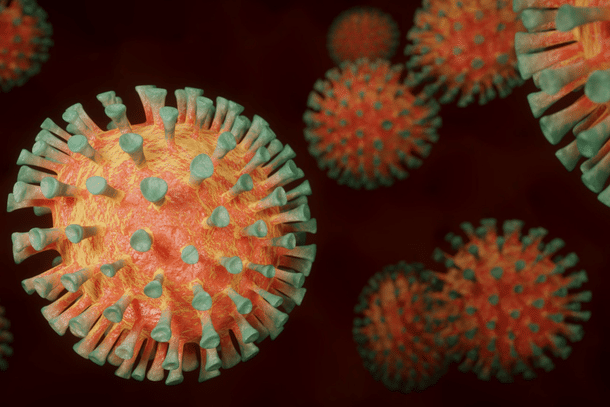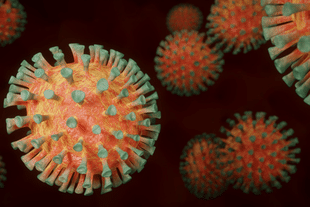Science
The Curious Case Of Covid-19 Origins: Science Writer Details Why Lab-Escape Scenario Is Plausible
Swarajya Staff
May 12, 2021, 01:07 PM | Updated 01:06 PM IST
Save & read from anywhere!
Bookmark stories for easy access on any device or the Swarajya app.


A recent blog by a seasoned science writer has woken people up from a strange stupor surrounding the origin of Covid-19 — and has puts its weight behind the often-dismissed hypothesis of the SARS-CoV-2 coronavirus having escaped from a Chinese laboratory to eventually make its way around the world.
The blog writer, Nicholas Wade, is a British author and journalist who has worked on the staff of reputed magazines Nature and Science as well as for the American newspaper New York Times.
Despite housing his words previously in stellar publications for decades, it was his personal blog on the online platform Medium where he made a case for the “lab escape scenario for the origin of the SARS2 virus (short for novel coronavirus SARS-CoV-2)”, showing in the process that it deserves a place on the high table of possible causes.
“In what follows I will sort through the available scientific facts, which hold many clues as to what happened, and provide readers with the evidence to make their own judgments,” writes Wade, adding that science “offers the only sure thread through the maze”.
As Wade goes about detailing the two main theories about the origin of SARS-CoV-2, looking into the “clues” and connections — both scientific and personnel related — in either case, the blog evokes shock.
The feeling of shock comes about for many reasons, not least for how quickly and easily, in retrospect, the possibility of the virus escaping from a Wuhan lab was dismissed (especially by scientists), with natural origins comfortably cornering the market on Covid-19 beginnings.
It’s been nearly one and a half years since the pandemic broke out in Wuhan, China, leaving 31 lakh deaths in its wake (and counting), and yet the world is still puzzled by the origin of the virus.
The inertia — or maybe even something more deliberate, depending on how you interpret Wade’s account of things — in exploring a possibility beyond natural emergence doesn’t cut it.
The generally accepted hypothesis is that SARS-CoV-2 jumped naturally from bats to humans, and possibly via an intermediate host species. If this is so, scientists on a hunt in the Chinese environment should have identified this intermediary or at least gotten somewhere with it.
Wade writes that the “intermediary host species of SARS1 was identified within four months of the epidemic’s outbreak, and the host of MERS within nine months”. But there’s been no luck so far with SARS-CoV-2.
In fact, there’s little known about “the original bat population, or the intermediate species to which SARS2 might have jumped, or any serological evidence that any Chinese population, including that of Wuhan, had ever been exposed to the virus prior to December 2019”.
And this is where we are after 16 months.
Some of the particularly notable points in Wade’s blog are:
(a) the United States link — in particular the National Institute of Allergy and Infectious Diseases (NIAID, whose director is Dr Anthony S Fauci) and the National Institutes of Health (NIH, whose director is Dr Francis Collins) — to research activities that involve amplifying the infectivity of coronaviruses in a Chinese laboratory and especially geared towards human cells;
(b) the funding of this so-called “gain of function” research — experiments conducted to produce a gain of a desired function in a virus — by the two US agencies NIAID and NIH despite there having been a moratorium placed on such funding in the United States (US) from 2014 to 2017;
(c) the general, inexplicable handling of SARS coronaviruses in China in lower biosafety lab levels (BSL2) than warranted (BSL4), implying that conditions were far too lax and, therefore, the risk higher;
(d) the lack of evidence from China in support of the natural emergence theory
(e) the uniformity of SARS-CoV-2 genome and the virus being well adapted for human transmission from when it appeared in the human population;
(f) and the presence of a “furin cleavage site” – necessary for the viral genome to eventually invade the human cell – not found in any known SARS-related beta-coronavirus.
These are but a small selection of the many points worthy of serious attention in Wade’s blog, and readers are encouraged to read all of it to gain a proper and fuller understanding of the points (and, more importantly, as intended by the writer) mentioned here briefly for the purpose of a quick overview.
Going over the possible scenarios — including a third pathway where SARS2 jumped directly from bats to humans, without going through an intermediate host — and following the various clues, Wade is careful to conclude that: “Neither the natural emergence nor the lab escape hypothesis can yet be ruled out. There is still no direct evidence for either.”
However, he writes, “the available evidence leans more strongly in one direction than the other”.
Earlier this year, in February, an international team sent by the World Health Organization to Wuhan, China, had little to conclude after their investigation. But they were once again quick to rule out the lab-leak scenario.
“The findings suggest that a laboratory incident hypothesis is extremely unlikely to explain the introduction of the virus into the human population," WHO scientist Peter Ben Embarek said in a press conference, adding that the team would not be revisiting this hypothesis in the future.
But there hasn’t been proof presented by Chinese authorities in support of natural origin either.
Curiously, Dr Daszak was part of this WHO mission.
He is the president of EcoHealth Alliance of New York, who was part of the group of virologists that had penned an early letter published in the medical journal Lancet in February 2020. In the letter, scientists resolved to “stand together to strongly condemn conspiracy theories suggesting that COVID-19 does not have a natural origin”.
Perhaps more interesting is Dr Daszak’s connection with virus research in Wuhan. According to Wade, Dr Daszak was the prime contractor to whom the grants by NIAID and NIH were assigned, which Dr Daszak then “subcontracted ... to Dr. Shi”.
Often called “bat woman” in China, Dr Shi Zheng-li is an expert on bat viruses and works at Wuhan Institute of Virology. She has been a regular at the caves of Yunnan in Southern China for the purpose of collecting bat coronaviruses.
As for Dr Daszak, he has described the idea of the virus escaping from the lab as “just pure baloney”. He has continued to dismiss the lab-leak idea.
If you keep aside the virus leak from the lab, the alternative (as mentioned earlier) is that the coronavirus causing Covid-19 jumped naturally from bats to humans, and possibly via an intermediate host species. This is going by scientists’ prior experience with bat coronaviruses.
However, as the headline of a story in MIT Technology Review reads, ‘No one can find the animal that gave people covid-19’. And this is after testing more than 80,000 animals. What doesn’t help is limited access to this data for the international community.
The chorus is now beginning to grow, although still shyly, for ‘next steps’ to investigate the origin of Covid-19 — presumably because of the desperation at a lack of answers.
Even the mainstream press — after they more or less gave up on the lab-escape hypothesis for a year (probably, in some cases, because Trump endorsed that view) — is echoing the need for next steps recently. (Here and here, as examples.)
WHO director-general Tedros Adhanom Ghebreyesus has called for further investigation into the origin of Covid-19, adding his voice to the concerns expressed by several countries, including India.
“Although the (WHO) team has concluded that a laboratory leak is the least likely hypothesis, this requires further investigation, potentially with additional missions involving specialist experts, which I am ready to deploy,” Tedros had said during a briefing about the report of the international team studying the origins of SARS-CoV-2.
More recently, a group of scientists have, in an open letter, called for “commensurate efforts … (to) now be expended in the next phase of the study examining the possibility of a lab-related incident”.
The letter spells out many important points and questions that need to be addressed by China. These include, notably, the April 2012 case of six men contracting severe pneumonia with Covid-19-like symptoms after visiting a mine in Mojiang (Yunnan) to clear bat guano, the sharing of animal sampling and testing data with the larger international community to help establish zoonotic origin, and make available the details of staff testing carried out at Wuhan labs (all staff were said to have tested negative), among others. (To take a look at all the questions addressed, read the open letter.)
More recently, coming out of left field — at least from the prism of conventional discourse — is the news of a leaked 2015 document where Chinese scientists and public health officials discussed the weaponisation of SARS coronaviruses. The document also reportedly predicts that a Third World War would be fought with biological weapons.
If China indeed is contemplating military applications for coronaviruses, it is simply one more cause, if ever more were required, to probe deeper into the origin of Covid-19 – and this time hopefully without dismissing the lab-escape scenario offhand.





